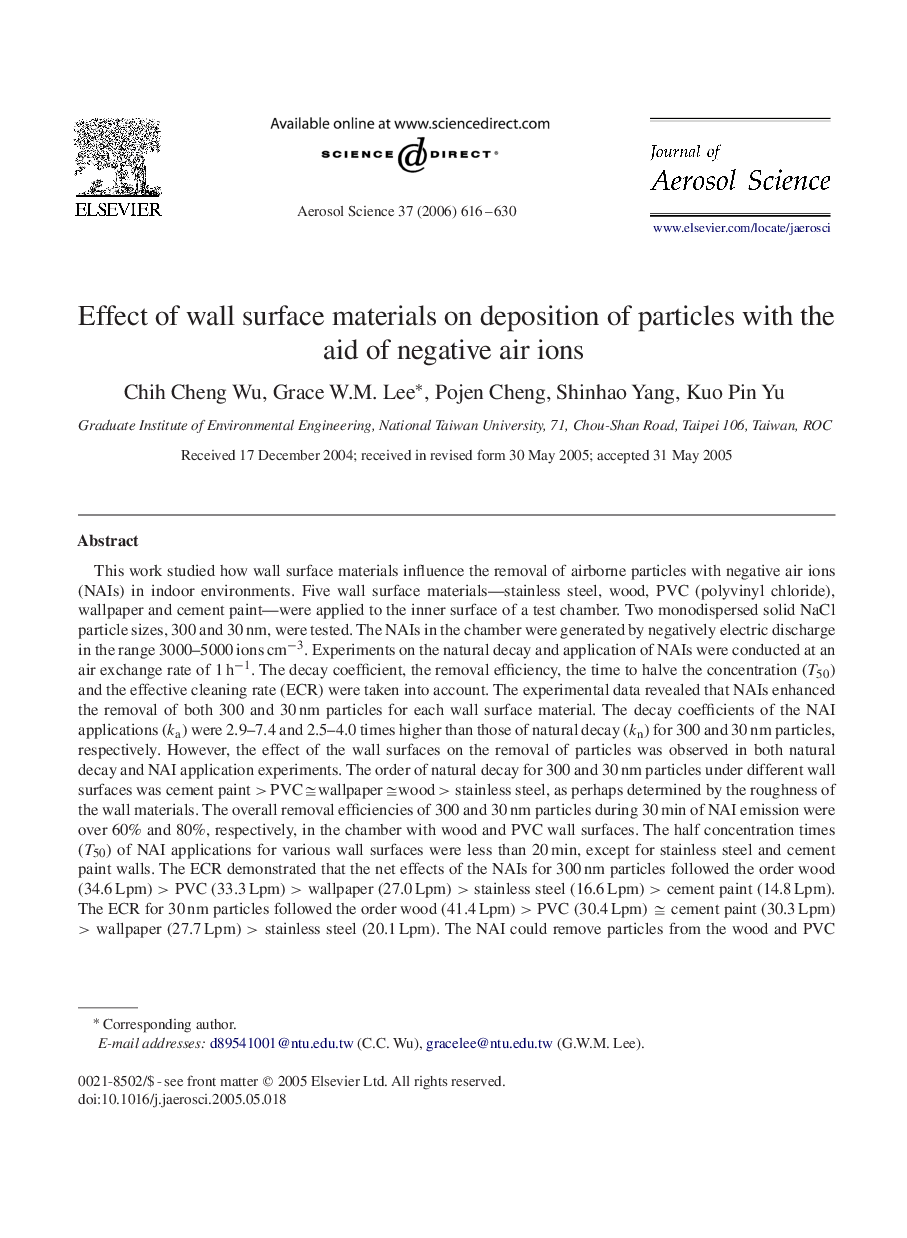| کد مقاله | کد نشریه | سال انتشار | مقاله انگلیسی | نسخه تمام متن |
|---|---|---|---|---|
| 4453392 | 1312158 | 2006 | 15 صفحه PDF | دانلود رایگان |

This work studied how wall surface materials influence the removal of airborne particles with negative air ions (NAIs) in indoor environments. Five wall surface materials—stainless steel, wood, PVC (polyvinyl chloride), wallpaper and cement paint—were applied to the inner surface of a test chamber. Two monodispersed solid NaCl particle sizes, 300 and 30 nm, were tested. The NAIs in the chamber were generated by negatively electric discharge in the range 3000–5000 ions cm-3-3. Experiments on the natural decay and application of NAIs were conducted at an air exchange rate of 1 h-1-1. The decay coefficient, the removal efficiency, the time to halve the concentration (T50T50) and the effective cleaning rate (ECR) were taken into account. The experimental data revealed that NAIs enhanced the removal of both 300 and 30 nm particles for each wall surface material. The decay coefficients of the NAI applications (kaka) were 2.9–7.4 and 2.5–4.0 times higher than those of natural decay (knkn) for 300 and 30 nm particles, respectively. However, the effect of the wall surfaces on the removal of particles was observed in both natural decay and NAI application experiments. The order of natural decay for 300 and 30 nm particles under different wall surfaces was cement paint >PVC≅wallpaper≅wood>>PVC≅wallpaper≅wood> stainless steel, as perhaps determined by the roughness of the wall materials. The overall removal efficiencies of 300 and 30 nm particles during 30 min of NAI emission were over 60% and 80%, respectively, in the chamber with wood and PVC wall surfaces. The half concentration times (T50T50) of NAI applications for various wall surfaces were less than 20 min, except for stainless steel and cement paint walls. The ECR demonstrated that the net effects of the NAIs for 300 nm particles followed the order wood (34.6 Lpm) >> PVC (33.3 Lpm) >> wallpaper (27.0 Lpm) >> stainless steel (16.6 Lpm) >> cement paint (14.8 Lpm). The ECR for 30 nm particles followed the order wood (41.4 Lpm) >> PVC (30.4 Lpm) ≅≅ cement paint (30.3 Lpm) >> wallpaper (27.7 Lpm) >> stainless steel (20.1 Lpm). The NAI could remove particles from the wood and PVC wall surfaces substantially more effectively than from other wall materials. The various electrical characteristics and roughness of the wall materials may have been responsible for the associated of the various ECRs with the various wall surface materials.
Journal: Journal of Aerosol Science - Volume 37, Issue 5, May 2006, Pages 616–630